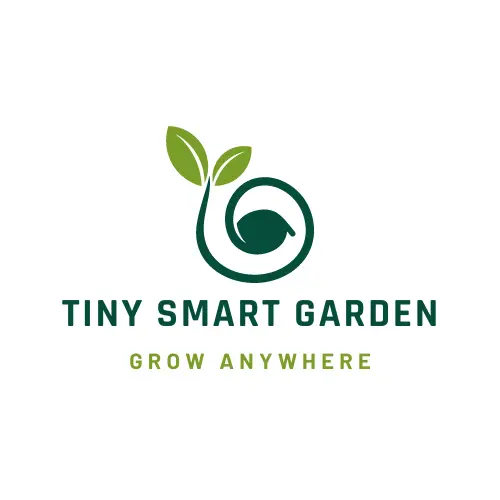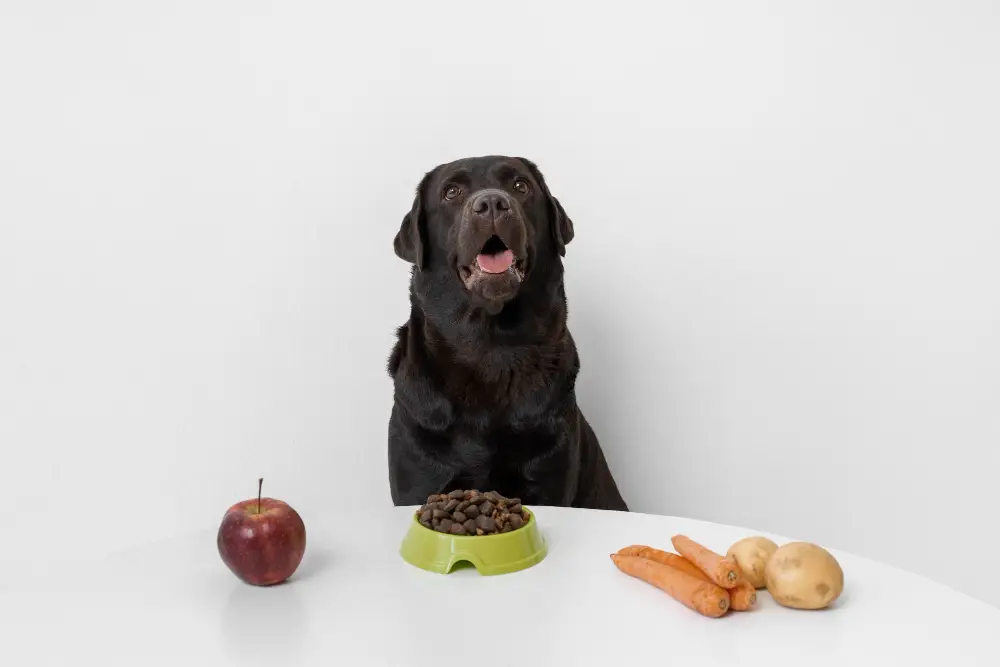We all want the best for our furry friends, and their nutrition is no exception. If you’re a dog owner and a gardening enthusiast, you might be wondering which garden vegetables are safe for your canine companion. Well, the good news is that many garden vegetables are not only safe for dogs but can also offer them a nutritious treat.

In this guide, we’ll dive into the world of garden vegetables safe for dogs, making sure you’re well-equipped to pamper your furry friend with the best nature has to offer. You can also find some tasty recipes if you’re looking to get creative.
Table of Contents
Top Garden Vegetables Safe for Dogs

- Carrots
- Celery
- Green Beans
- Peas
- Cucumbers
- Bell Peppers
- Zucchini
- Sweet Potatoes
- Broccoli
- Brussel Sprouts
- Cabbage
Let’s dig into the world of canine-friendly veggies:
Carrots
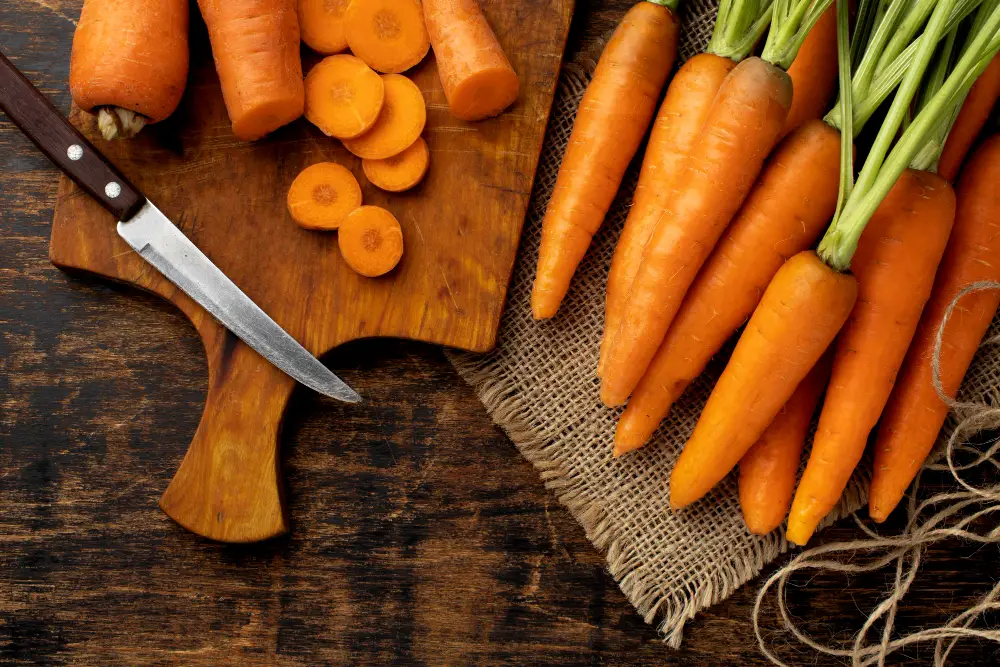
Image by Freepik
Carrots are a canine favorite, and for good reason. They’re not only safe but also rich in fiber and beta-carotene, which produces vitamin A. They’re also rich in vitamin C, as well as fiber. They’re a great option for a low-calorie snack. Try giving your pup a raw carrot or mixing some cooked carrots into their meals for a tasty and nutritious boost.
- Preparation: Wash the carrots thoroughly. You can serve carrots to your dog either raw or cooked. If serving them raw, cut them into small, bite-sized pieces that are appropriate for your dog’s size. If cooking, you can steam, boil, or lightly roast the carrots until they are soft and tender.
- Chewing: Carrots can be a great natural chew toy for dogs, promoting dental health by helping to reduce plaque and tartar buildup. The crunchy texture of raw carrots can also provide mental stimulation and satisfy your dog’s desire to chew.
- Carrot Sticks: It’s important to be mindful of the size and shape of carrot sticks when feeding them to your dog. Large, whole carrot sticks can pose a choking hazard, especially for small dogs.
Celery
It’s low in calories and contains vitamins like A, C, and K, as well as fiber. Celery can be given to dogs in small, bite-sized pieces as a crunchy and refreshing treat. Some dogs enjoy the crunchiness of celery, and it can also help promote dental health by assisting in cleaning their teeth.
This snack supports heart health and may help fight cancer. Celery can also freshen your dog’s breath. Look for celery dog chews as an enjoyable option.
- Preparation: Wash the celery, trim the ends of the stalks, and cut them into small, manageable pieces for your dog. Raw celery is safe for dogs to consume, but you may also choose to lightly steam or boil it for easier digestion.
- Choking Hazard: Celery strings or fibers can sometimes be challenging for dogs to chew and may pose a choking hazard, especially for small dogs. To minimize this risk, you can either remove the strings before feeding celery to your dog or cook it to soften the fibers.
- Sodium Content: Celery naturally contains some sodium, which can be beneficial in small amounts. However, if your dog has specific dietary restrictions, such as a low-sodium diet, it’s best to consult with your veterinarian before including celery in their diet.
Not all dogs may enjoy the taste or texture of celery, so it’s best to introduce it gradually and observe your dog’s response.
Green Beans
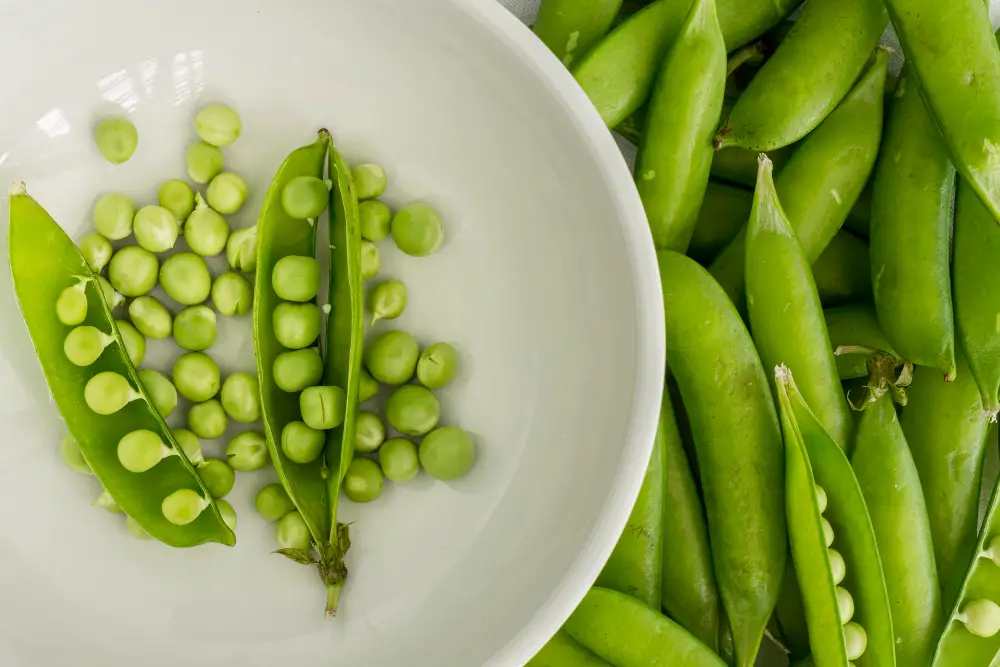
Image by Freepik
Green beans can be a healthy and nutritious addition to a dog’s diet. They are low in calories and high in fiber, which can help with digestion and weight management. Green beans also contain vitamins and minerals such as vitamin C, vitamin K, and manganese.
You can prepare them in different ways. Here are a few options:
- Raw: Some dogs enjoy snacking on raw green beans. Make sure to wash them thoroughly and cut them into appropriate-sized pieces for your dog.
- Steamed: Steaming green beans can soften them slightly and make them easier for dogs to chew and digest. Simply steam the green beans until they are tender and let them cool before serving.
- Boiled: Boil green beans until they are cooked but still firm. Once they are cooled, you can offer them as a healthy treat.
Green beans can be served as a standalone snack or mixed with your dog’s regular food. You can also opt for no-salt canned green beans or use frozen ones as enrichment snacks.
Peas
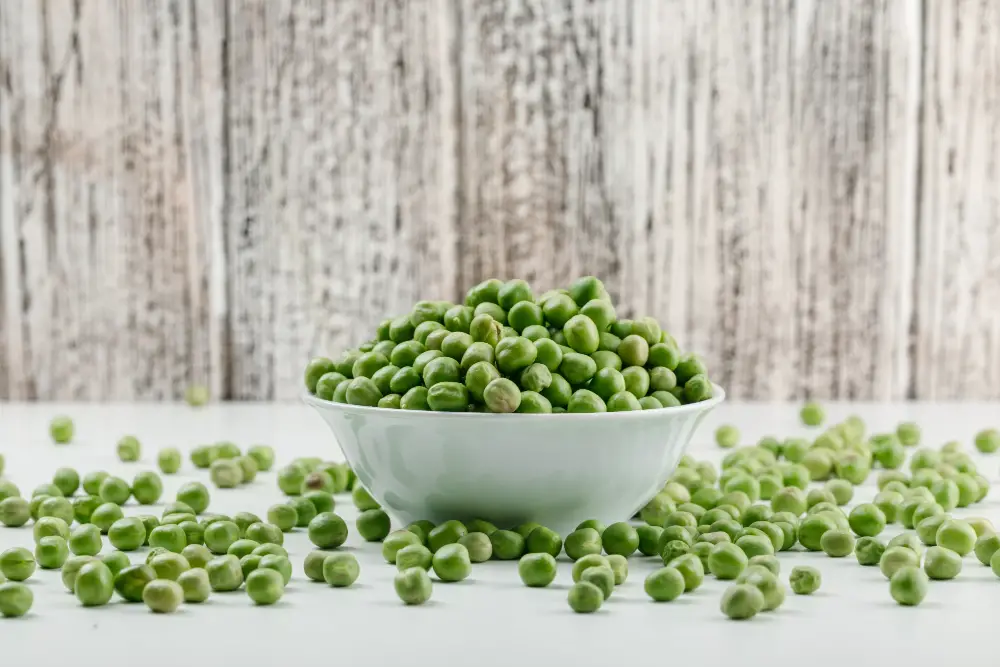
Image by 8photo on Freepik
A good source of vitamins, minerals, and fiber. Here are some different kinds you can give to your pup:
1. Green Peas: They are low in calories and high in fiber, which can aid in digestion. Green peas also contain vitamins A, C, and K, as well as minerals like iron and potassium.
2. Sugar Snap Peas: Crispy with a satisfying crunch. Like green peas, sugar snap peas are a good source of vitamins and fiber.
3. Snow Peas: Also known as Chinese pea pods, can be fed to dogs as well. They have a mild, sweet flavor and can be served raw or lightly steamed. Snow peas are rich in vitamins A and C.
When feeding peas to your dog, it’s important to prepare them properly. Here are a few options:
- Raw: Peas can be served raw as a crunchy snack. Make sure to wash them thoroughly and remove any tough strings or stems.
- Steamed: Steaming peas can help soften them and make them easier to digest. Steam them until they are tender, then let them cool before offering them to your dog.
- Mashed or Pureed: You can also mash or puree peas and mix them with your dog’s regular food to enhance their nutritional value.
Frozen peas can also be a good option for hot days, but avoid canned peas with added sodium.
Cucumbers
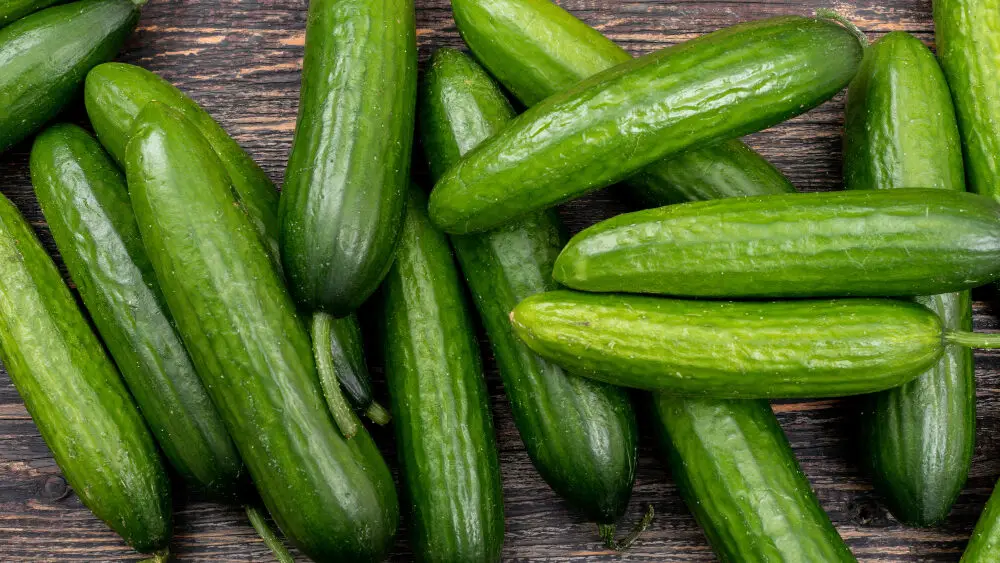
Image by 8photo on Freepik
Low in calories, fat-free, and a good source of hydration. Cucumbers are also rich in vitamins K and C, as well as minerals like potassium and magnesium. However, it’s important to keep a few things in mind when feeding cucumbers to your pup:
- Preparation: Wash the cucumber thoroughly to remove any dirt or pesticides. You can choose to peel the cucumber or leave the skin on, but make sure to remove any tough or bitter ends.
- Slicing: Cut the cucumber into bite-sized pieces that are appropriate for your dog’s size. It’s best to avoid giving whole cucumbers to dogs, as they may pose a choking hazard.
- Moderation: While cucumbers are generally safe for dogs, they should be given in moderation. Too much cucumber can potentially lead to digestive upset or diarrhea.
Cucumbers can be served as a standalone treat or mixed into your dog’s regular food for added crunch and hydration.
Bell Peppers
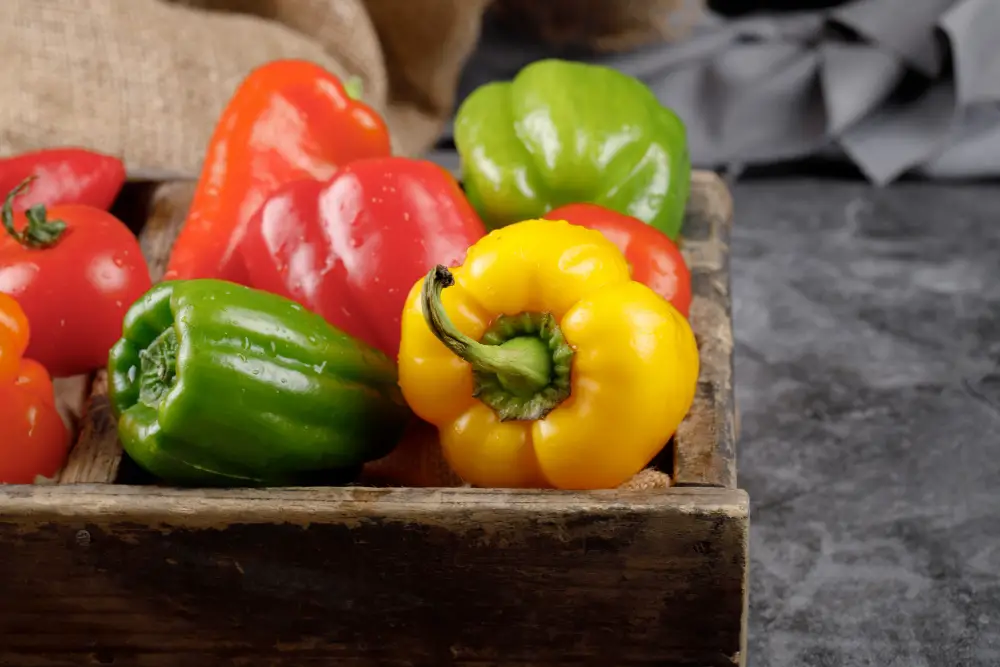
Image by azerbaijan_stockers on Freepik
They are low in calories and contain beneficial nutrients like vitamins A, C, and E, and fiber. All varieties of bell peppers, including red, green, and yellow, are safe for dogs to eat.
- Preparation: Wash and remove the stems and seeds before offering them to your dog. It’s best to slice the peppers into small, bite-sized pieces that are appropriate for your dog’s size.
- Raw or Cooked: Bell peppers can be served raw or lightly cooked. Raw peppers provide a satisfying crunch, while slightly cooked peppers may be easier for some dogs to digest. Avoid overcooking the peppers, as this can lead to a loss of nutrients.
Zucchini
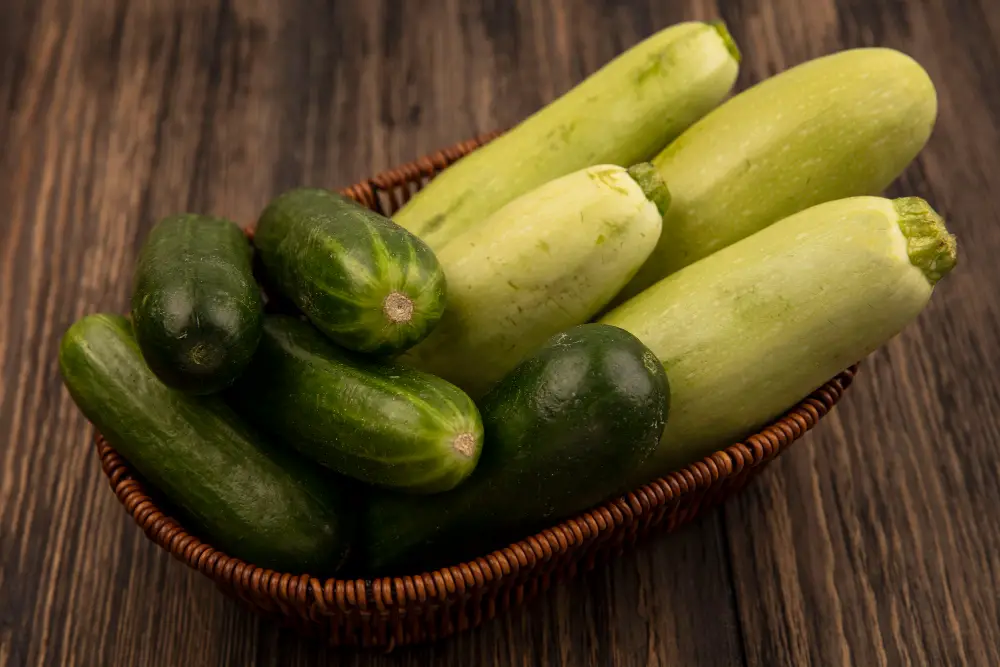
Image by stockking on Freepik
Zucchini is a low-calorie vegetable that contains beneficial nutrients such as vitamins A and C, potassium, and fiber.
- Preparation: You can choose to peel the zucchini or leave the skin on, but make sure to remove any tough ends. It’s also a good idea to cut the zucchini into small, bite-sized pieces that are suitable for your dog’s size.
- Raw or Cooked: Zucchini can be served raw or lightly cooked. Raw zucchini provides a crunchy texture, while slightly cooked zucchini may be easier for some dogs to digest. Avoid overcooking, as it can lead to a loss of nutrients.
Sweet Potatoes
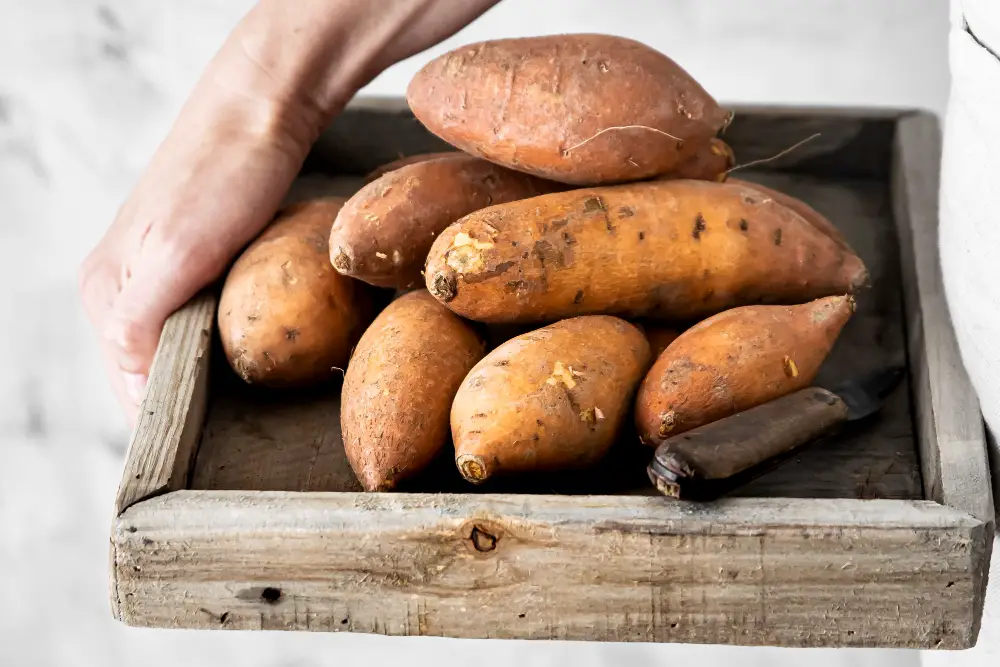
Image by rawpixel.com on Freepik
They are a good source of dietary fiber, vitamins A and C, and several minerals. Sweet potatoes are also low in fat and contain antioxidants that can benefit a dog’s overall health.
- Preparation: You can choose to cook them in various ways such as baking, boiling, or steaming. It’s important to cook sweet potatoes before feeding them to dogs as raw sweet potatoes can be difficult for dogs to digest.
- Avoid Seasonings: When preparing sweet potatoes for dogs, avoid using seasonings, additives, or toppings that may be harmful to them. Plain, cooked sweet potatoes are the best option.
- Serving Size: The appropriate serving size of sweet potatoes for dogs depends on their size, weight, and individual nutritional needs. As a general guideline, you can start by offering small amounts and gradually increasing the portion size over time. Monitoring your dog’s weight and overall condition can help in determining the right amount.
Broccoli
It’s high in fiber and vitamin C, making it a healthy choice. However, be cautious with broccoli florets as they contain isothiocyanates, which can irritate some dogs. Cooked broccoli is a better option to avoid issues.
- Preparation: Wash the broccoli into small, bite-sized florets that are suitable for your dog’s size. Avoid using the stems, as they can be tough and difficult to digest. It’s best to serve broccoli in its cooked form to enhance digestibility.
- Cooking Methods: Broccoli can be lightly steamed, boiled, or roasted before feeding it to your dog. Cooking helps break down the fibrous texture of broccoli and makes it easier for dogs to digest. Avoid using seasonings, spices, or oils that may be harmful to dogs. Serve plain, cooked broccoli.
- Oxalates: Broccoli contains a naturally occurring compound called oxalate, which, in high quantities, can interfere with calcium absorption and potentially contribute to the formation of calcium oxalate stones in some dogs. If your dog has a history of calcium oxalate stones or a predisposition to them, it may be best to limit their broccoli consumption.
Brussels Sprouts
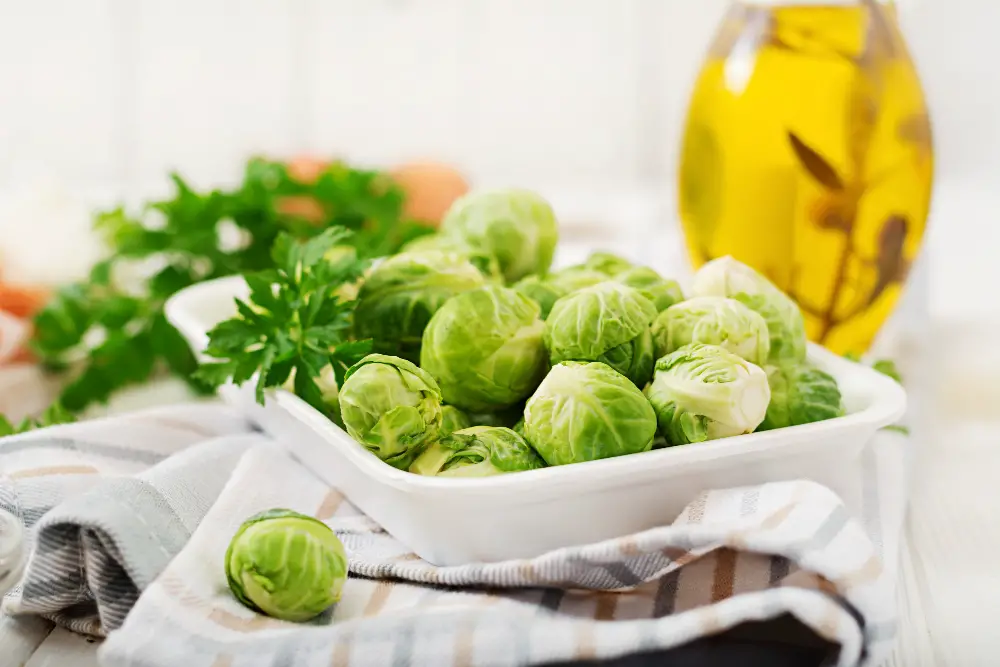
Image by timolina on Freepik
They are a member of the cruciferous vegetable family, which also includes broccoli and cauliflower. Brussels sprouts are rich in vitamins A, C, and K, as well as fiber and antioxidants.
- Preparation: Wash and trim the ends and remove any wilted or damaged leaves. Cut the Brussels sprouts into small, bite-sized pieces that are appropriate for your dog’s size. Cooking Brussels sprouts is recommended to improve digestibility.
- Cooking Methods: It’s best to cook Brussels sprouts before feeding them to dogs. You can lightly steam, boil, or roast them. Avoid using seasonings, spices, or oils that may be harmful to dogs. Serve plain, cooked Brussels sprouts.
- Gas-Producing Effect: Brussels sprouts, like other cruciferous vegetables, can have a gas-producing effect on some dogs. Monitor your dog for any signs of increased flatulence or discomfort. If your dog experiences excessive gas or digestive issues, it may be best to reduce or avoid Brussels sprouts.
Cabbage
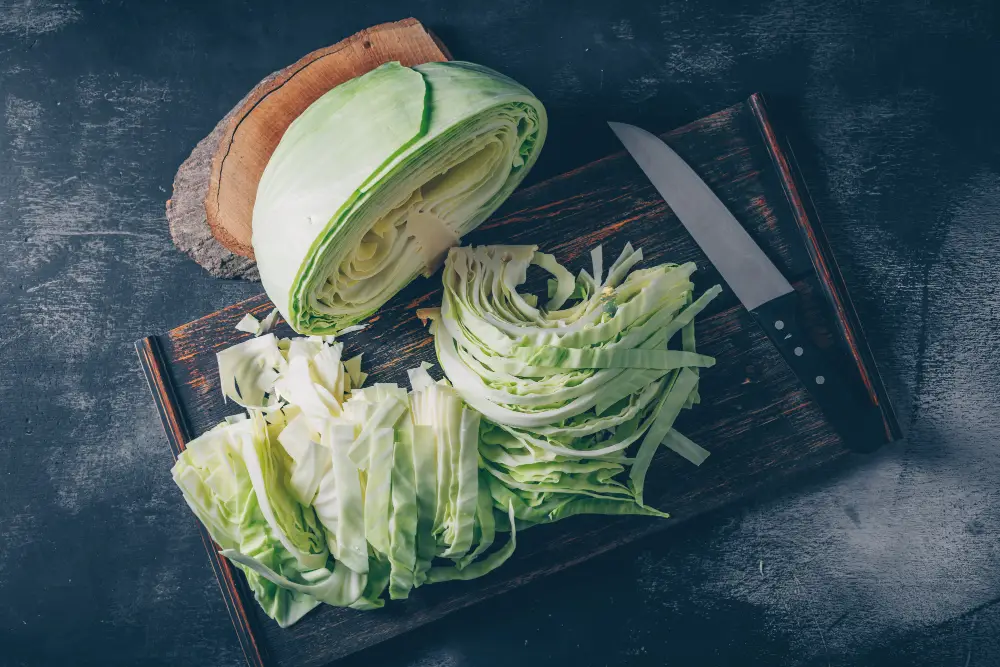
Image by 8photo on Freepik
Cabbage is low in calories and a good source of fiber, vitamins C and K, and antioxidants. It’s better to cook the cabbage for improved digestibility.
- Preparation: Wash and remove the tough outer leaves, and then chop or shred the cabbage into small, bite-sized pieces that are suitable for your dog’s size.
- Cooking Methods: Cabbage can be lightly steamed, boiled, or sautéed before feeding it to your dog. Avoid adding seasonings, spices, or oils that may be harmful to dogs. Serve plain, cooked cabbage.
- Thyroid Function: Cabbage, like other cruciferous vegetables, contains compounds called goitrogens that can interfere with thyroid function when consumed in large amounts. However, the goitrogenic effect of cabbage is generally considered to be minimal, especially when cooked. Nevertheless, if your dog has a known thyroid condition, it’s best to consult with your veterinarian regarding the appropriate amount of cabbage in their diet.
Always introduce new vegetables gradually into your dog’s diet and watch for any signs of digestive issues or allergies. Additionally, always wash vegetables thoroughly and remove any seeds, pits, or parts that may be harmful to dogs.
Remember to practice moderation, monitor your dog’s reaction to new foods, and consult your veterinarian if you have any concerns about their diet.
Benefits of Feeding Garden Vegetables to Dogs

Apart from being delicious, garden vegetables offer several benefits to your furry friend. They can improve digestion, contribute to a shiny coat, and support overall health. These veggies are also an excellent source of vitamins and minerals essential for a dog’s well-being.
1. Nutritional Benefits: Garden vegetables are packed with essential vitamins, minerals, and fiber that can support your dog’s overall health.
2. Weight Management: Veggies are low in calories and can be a great addition to your dog’s diet, especially if they need to shed a few pounds.
3. Digestive Health: The fiber in vegetables can aid in digestion and keep your dog’s gastrointestinal system in tip-top shape.
4. Hydration: Some vegetables have a high water content, which can help keep your pup hydrated, especially on hot days.
5. Tasty Treats: Many dogs enjoy the taste and texture of vegetables, making them a delightful and healthy alternative to store-bought treats.
Looking for ways to organize your garden? Check out our Guide to Organizing Your Tiny Backyard Garden. Not enough space? No worries you can opt for Building a Vertical Container Garden.
If you share an apartment with your furry friend but still want to try out your green thumb, you might be interested in getting a smart garden instead. They’re a pet-friendly and space-saving option that can bring fresh produce without taking up much space. Check out the 5 Best Smart Gardens for Your Home in 2023.
Garden Vegetables to Avoid
While many garden vegetables are safe for dogs, some can be harmful to dogs. Additionally, steer clear of vegetables prepared with added seasonings, butter, or oils. Here are some veggies you should steer clear of:
- Asparagus: It provides little to no nutritional benefit and can be tough to digest even when cooked.
- Mushrooms: Dogs should avoid mushrooms, especially wild ones, as some can be toxic and lead to serious health issues or even death. Stick to safe, store-bought mushrooms if needed.
- Onions: Onions, leeks, and chives are toxic to dogs and can cause various health problems, including damage to red blood cells. Keep all forms of onions away from your dog.
- Spinach: While dogs can eat spinach, it’s not a top choice due to its oxalic acid content, which can hinder calcium absorption and potentially harm the kidneys.
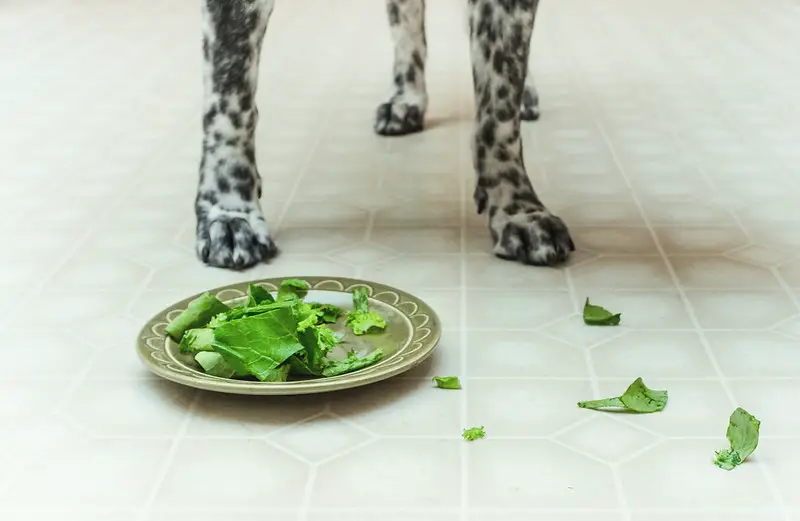
Creative Recipes for Dog-Friendly Vegetable Treats
Here are a few creative recipes for dog-friendly vegetable treats:
Carrot and Sweet Potato Mash
Ingredients:
- 2 large carrots
- 2 medium-sized sweet potatoes
Instructions:
Peel and chop the carrots and sweet potatoes into small chunks. Steam the carrots and sweet potatoes until they are tender. Mash them together until you achieve a smooth and creamy consistency.
Frozen Green Bean Popsicles
Ingredients:
- 1 cup of green beans
- Low-sodium chicken or vegetable broth
Instructions:
Steam the green beans until they are slightly tender. Allow the green beans to cool to room temperature. Place the steamed green beans into popsicle molds. Pour low-sodium chicken or vegetable broth into the molds to cover the green beans. Freeze the popsicles until they are solid.
Serve these cool and refreshing green bean popsicles as a summer treat for your dog.
Sweet Potato Fries
Ingredients:
- 1 large sweet potato
- 1 tablespoon olive oil
Instructions:
Preheat the oven to 425°F (220°C). Peel the sweet potato and cut it into thin strips. Toss the sweet potato strips with olive oil. Place them on a baking sheet in a single layer. Bake for about 20 minutes or until crispy. Let them cool before serving them to your dog.
Carrot and Peanut Butter Pupcakes
Ingredients:
- 1 cup grated carrots
- 1/4 cup natural peanut butter (make sure it doesn’t contain xylitol, which is toxic to dogs)
- 1 cup whole wheat flour
- 1/4 cup unsweetened applesauce
- 1/4 cup honey
- 1/4 cup water
- 1 teaspoon baking powder
Instructions:
Preheat the oven to 350°F (175°C). Mix all the ingredients in a bowl until well combined. Spoon the batter into greased muffin cups. Bake for about 20 minutes or until a toothpick inserted into the center comes out clean. Allow the pupcakes to cool before serving.
Zucchini Bites
Ingredients:
- 2 zucchinis
- 1/2 cup shredded cheddar cheese
- 1/4 cup grated Parmesan cheese
- 1/4 cup whole wheat flour
- 1/4 cup plain Greek yogurt
- 1 egg
Instructions:
Preheat the oven to 350°F (175°C). Grate the zucchinis and squeeze out any excess moisture.
In a bowl, mix together the grated zucchinis, cheddar cheese, Parmesan cheese, whole wheat flour, Greek yogurt, and egg. Form the mixture into small balls and place them on a greased baking sheet. Bake for about 15-20 minutes or until golden brown. Allow the zucchini bites to cool before serving.
Spinach and Cheese Muffins
Ingredients:
- 2 cups spinach, cooked and chopped
- 1 cup shredded cheddar cheese
- 1 1/2 cups whole wheat flour
- 1/2 cup unsweetened applesauce
- 1/4 cup water
- 2 tablespoons olive oil
- 1 teaspoon baking powder
Instructions:
Preheat the oven to 350°F (175°C). In a bowl, combine the spinach, cheddar cheese, whole wheat flour, applesauce, water, olive oil, and baking powder. Spoon the batter into greased muffin cups. Bake for about 20 minutes or until a toothpick inserted into the center comes out clean. Allow the muffins to cool before serving.
Broccoli and Chicken Bites
Ingredients:
- 1 cup cooked and shredded chicken
- 1 cup steamed broccoli, chopped
- 1/2 cup oat flour (blend oats in a food processor until finely ground)
- 1/4 cup plain Greek yogurt
- 1 egg
Instructions:
Preheat the oven to 350°F (175°C). In a bowl, mix together the shredded chicken, chopped broccoli, oat flour, Greek yogurt, and egg until well combined. Form the mixture into small bite-sized balls and place them on a greased baking sheet. Bake for about 15-20 minutes or until cooked through. Allow the bites to cool before serving.
Cheesy Broccoli Bites
Ingredients:
- Bite-sized broccoli florets
- Grated cheese (choose your dog’s favorite variety)
Instructions:
Preheat your oven to 350°F (175°C). Spread the bite-sized broccoli florets on a baking sheet. Sprinkle a moderate amount of grated cheese over the broccoli florets. Bake in the preheated oven for about 15-20 minutes or until the cheese is melted and bubbly. Allow the broccoli bites to cool before serving.
Remember to adjust the portion sizes and ingredients based on your dog’s size, dietary needs, and any specific allergies or sensitivities they may have.
Always consult with your veterinarian before introducing any new foods to your dog’s diet, especially if they have any dietary restrictions or health concerns.
FAQs
Can dogs eat raw vegetables?
- While some vegetables are safe in their raw form, it’s generally better to lightly cook or steam them to aid digestion.
Can I feed my dog garden vegetables every day?
- While many garden vegetables are safe for dogs, moderation is key. Treat vegetables as occasional snacks or meal additions rather than a primary food source to ensure a balanced diet.
How much vegetables should I give my dog?
- Start with small portions and monitor your dog’s reaction. Consult your vet for specific recommendations based on your dog’s size and breed.
Can I replace my dog’s regular food with vegetables?
- Vegetables should complement your dog’s regular diet, not replace it. They are best used as treats or supplements.
Are there any vegetables that are harmful to dogs?
- Yes, some vegetables like onions, garlic, and tomatoes can be toxic to dogs.
How should I prepare vegetables for my dog?
- Wash vegetables thoroughly, remove seeds or pits, and cut them into appropriate bite-sized pieces. Cooking or steaming can make some veggies easier to digest.
Can I share my homegrown veggies with my dog?
- Absolutely! Homegrown vegetables can be a fantastic and safe treat for your dog, provided they are free from pesticides or harmful chemicals.
What if my dog doesn’t like vegetables?
- Experiment with different preparation methods and gradually introduce them. Some dogs may develop a taste for vegetables over time.
My dog has food allergies. Can I still feed them garden vegetables?
- It’s essential to consult your veterinarian if your dog has food allergies. Some vegetables might trigger allergies, so it’s crucial to introduce new foods cautiously.
Every dog is unique, and their tolerance for certain foods may vary. When introducing a new vegetable, monitor your dog for any adverse reactions, such as gastrointestinal upset or allergies. If you notice any issues, consult your veterinarian.
